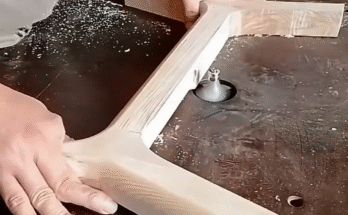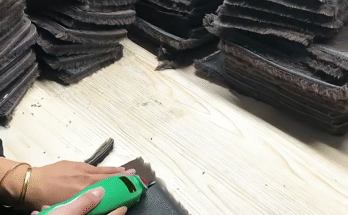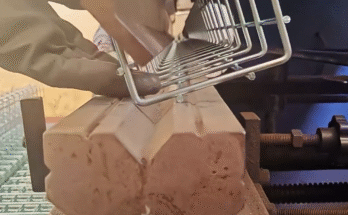Welding tap water pipes is a crucial skill for plumbers and construction professionals, ensuring leak-proof and durable connections. While traditional methods like soldering or threading are still used, welding, particularly for certain types of pipes, offers superior strength and longevity. This guide focuses on common welding methods for water pipes.
Important Note: Welding should only be performed by trained individuals with proper safety equipment. Always consult local building codes and regulations.
Step-by-Step Tap Water Pipe Welding Process
The specific steps will vary slightly depending on the type of pipe material (e.g., copper, steel, or various plastics for fusion welding) and the welding method used (e.g., TIG, MIG, or fusion welding). This guide will cover a general approach applicable to common scenarios.
Phase 1: Preparation is Key Safety First (Non-Negotiable): Wear appropriate Personal Protective Equipment (PPE): Welding helmet (auto-darkening recommended), flame-retardant gloves, long-sleeved shirt/jacket, long pants, and closed-toe shoes. Ensure good ventilation to disperse fumes. Have a fire extinguisher readily available. Remove any flammable materials from the work area. Crucially for water pipes: Ensure the water supply to the section being worked on is completely shut off and drained. Verify by opening a tap downstream. Pipe Material Identification: Determine the material of the pipes you’ll be welding (e.g., copper, stainless steel, carbon steel, or specific plastic types like HDPE or PP-R). This dictates the welding process, filler material, and equipment. Pipe Cutting and Sizing: Accurately measure and cut the pipes to the required length using a pipe cutter or appropriate saw. A clean, straight cut is essential for a good weld. Edge Preparation (Crucial for Strong Welds): For Metal Pipes (Copper, Steel): Cleanliness: Thoroughly clean the pipe ends, both inside and out, using a wire brush, abrasive pad, or sandpaper to remove any dirt, grease, rust, or oxidation. Contaminants will compromise weld quality. Deburring: Remove any burrs from the cut edges using a reamer or file. Burrs can restrict flow and interfere with proper joint fit-up. Beveling (for thicker metal pipes): For thicker pipes, especially steel, beveling the edges (creating an angled cut) may be necessary to create a “V” or “J” groove. This allows for full penetration of the weld and a stronger joint. The angle and depth of the bevel depend on the pipe thickness and welding process. For Plastic Pipes (Fusion Welding): Cleaning: Clean the pipe ends with an alcohol wipe to remove any contaminants. Facing/Trimming: For butt fusion, the pipe ends need to be perfectly flat and parallel. A pipe facer/trimmer tool is used to achieve this, removing any irregularities from the cut. Joint Fit-Up: Ensure the pipe ends align perfectly with no gaps or misalignment. Use clamps or pipe stands to hold the pipes securely in position. For metal pipes, tack welds might be used to temporarily hold them in place before the full weld. Phase 2: The Welding Process
The welding method will depend heavily on the pipe material:
A. For Metal Pipes (e.g., Copper, Steel):
Common Methods: TIG (Tungsten Inert Gas) welding is often preferred for copper and stainless steel due to its clean, precise welds. MIG (Metal Inert Gas) welding can be used for steel, offering faster deposition. Soldering/Brazing (while not strictly welding, often used for copper) uses filler metal with a lower melting point. Set Up Welding Machine: Connect the ground clamp securely to the pipe or work surface. Select the appropriate welding process (TIG, MIG, etc.) and set the correct amperage/voltage, wire feed speed (for MIG), and gas flow rate (for TIG/MIG) based on pipe material, thickness, and filler metal. Ensure the correct type and size of filler rod/wire for the pipe material. Preheating (for some metal pipes): For thicker or specific metal pipes (e.g., cast iron or some high-carbon steels), preheating the joint area with a torch may be necessary to prevent cracking and improve weld quality. Execute the Weld: TIG Welding (for Copper & Stainless Steel): Maintain a consistent arc length and travel speed. Introduce the filler rod smoothly into the weld puddle. Move steadily around the circumference of the pipe, ensuring full penetration and a consistent bead. Overlap each pass slightly to ensure a continuous weld. MIG Welding (for Steel): Maintain a consistent stick-out of the welding wire. Use a push or pull technique depending on the desired bead profile. Keep the torch angle consistent and move steadily around the pipe. Cooling: Allow the weld to cool naturally in the air. Do not quench with water, as this can cause brittleness or cracking.
B. For Plastic Pipes (e.g., HDPE, PP-R – Fusion Welding):
Common Methods: Butt fusion and socket fusion are common for plastic water pipes. Set Up Fusion Machine: Secure the pipes into the clamps of the fusion machine. Position the heating plate/tool between the pipe ends. Set the correct heating temperature and time according to the pipe manufacturer’s specifications. Heating Phase: Bring the pipe ends into firm contact with the heating plate/tool. Apply the specified pressure to melt the pipe ends evenly. Hold for the recommended heating time. Removal of Heating Tool: Quickly and smoothly remove the heating plate/tool. Joining/Fusion Phase: Immediately bring the molten pipe ends together with the specified fusion pressure. Hold the pipes together under pressure for the recommended cooling/holding time. Do not disturb the joint during this phase. Cooling: Allow the joint to cool completely while still clamped in the machine (or undisturbed for socket fusion). This ensures the strongest bond. Phase 3: Post-Welding and Testing Visual Inspection: Once cooled, visually inspect the weld for any defects such as cracks, porosity, undercut, or incomplete fusion. The weld bead should be uniform and consistent. Cleaning (for metal welds): Remove any slag (from stick welding or some MIG applications) or discoloration with a wire brush or grinder. Pressure Testing (Crucial for Water Pipes): This is the most critical step to ensure a leak-proof system. Isolate the newly welded section: Close off valves upstream and downstream. Fill with water: Slowly fill the section with water, allowing any trapped air to escape. Pressurize: Use a hand pump or pressure testing machine to gradually increase the internal pressure to the system’s operating pressure, or typically 1.5 times the operating pressure as per code. Hold and Inspect: Hold the pressure for a specified period (e.g., 30 minutes to several hours) while carefully inspecting the weld joints for any signs of leaks (drips, sweating). Mark any leaks for repair. Depressurize: Once testing is complete and no leaks are found, slowly release the pressure. Insulation/Protection (if required): Apply insulation or protective coatings as necessary to prevent heat loss, corrosion, or physical damage to the pipe and weld.
By following these detailed steps, you can achieve strong, reliable, and leak-free connections for tap water pipes, ensuring the longevity and efficiency of the plumbing system.



